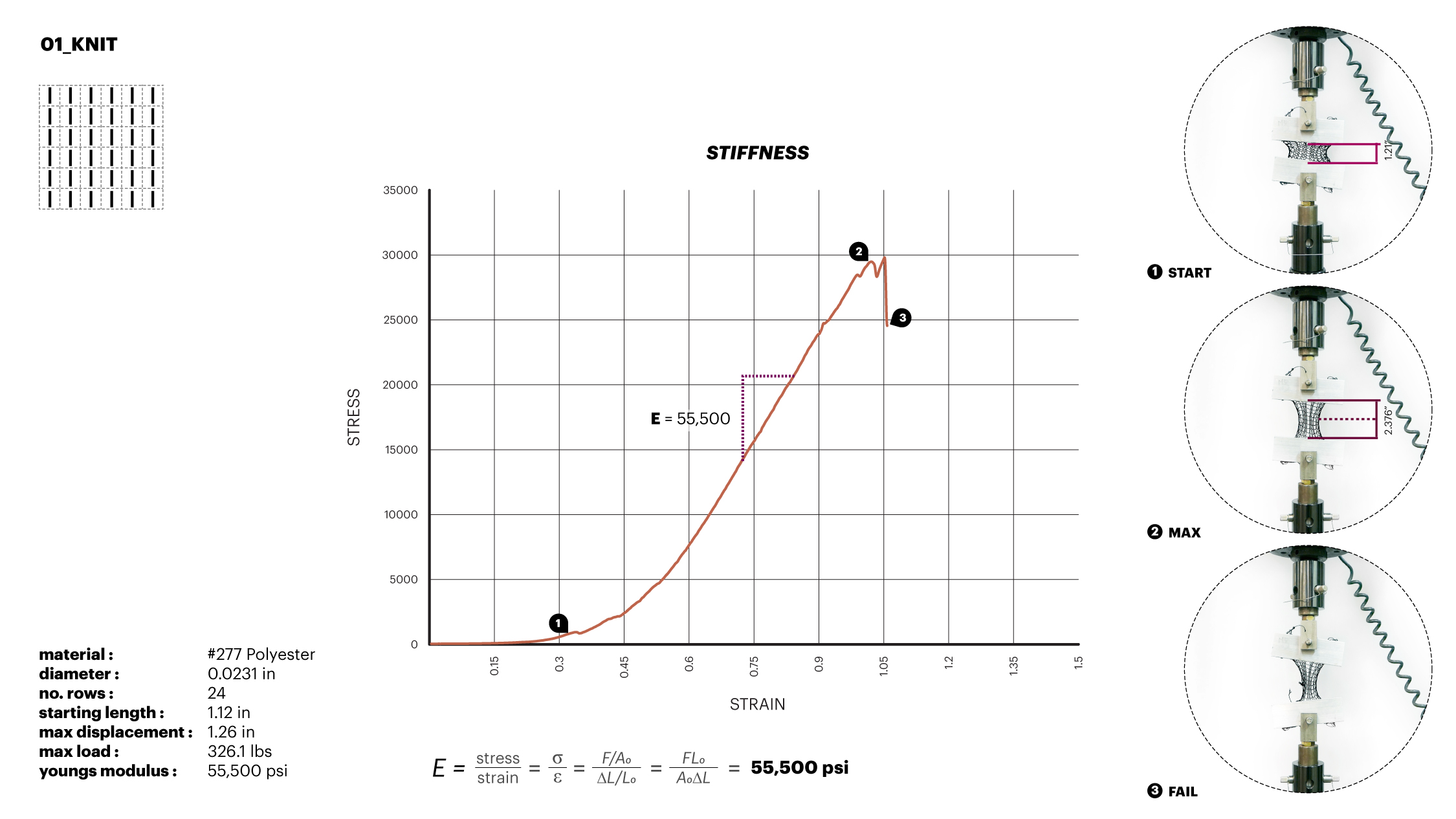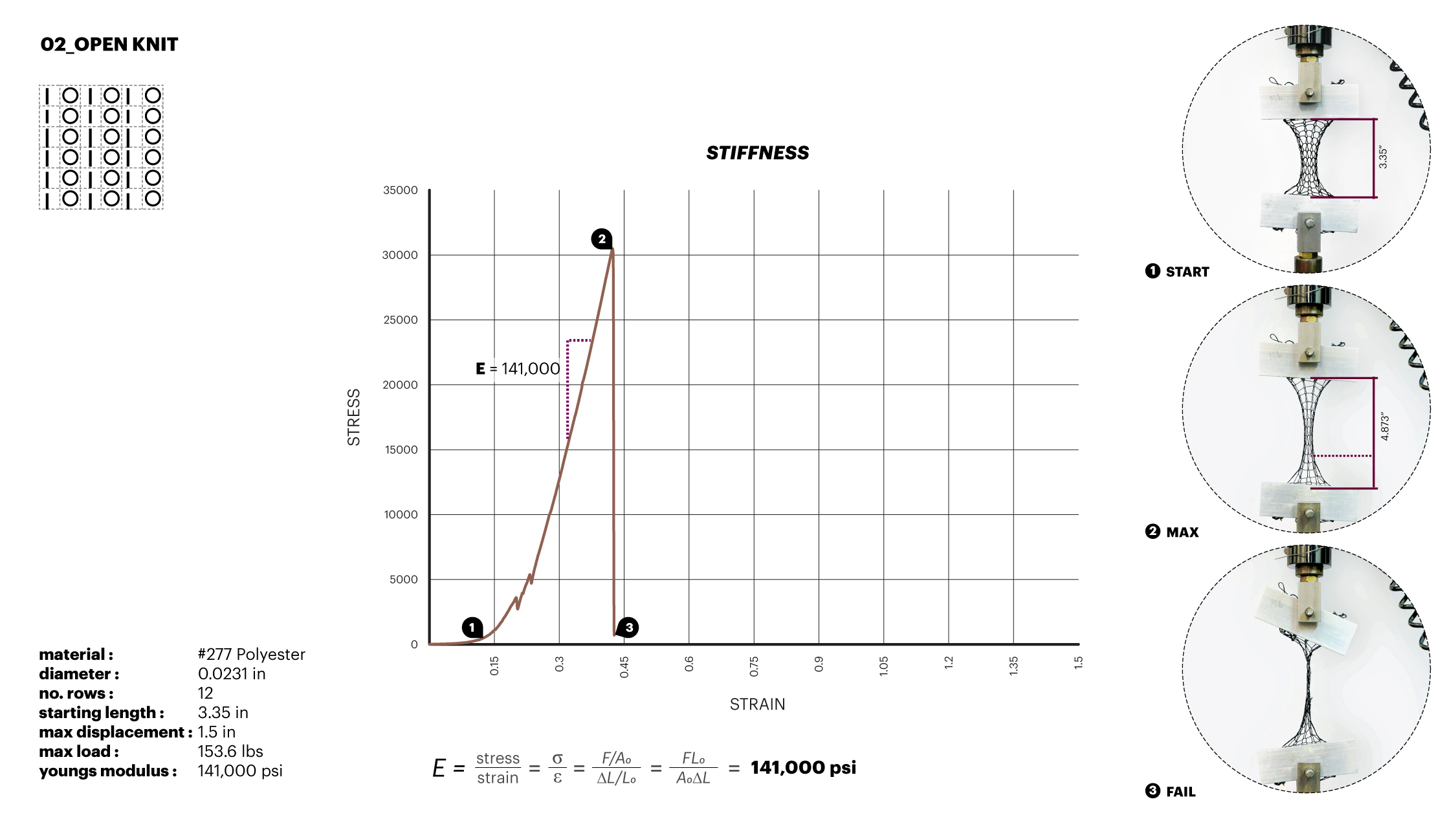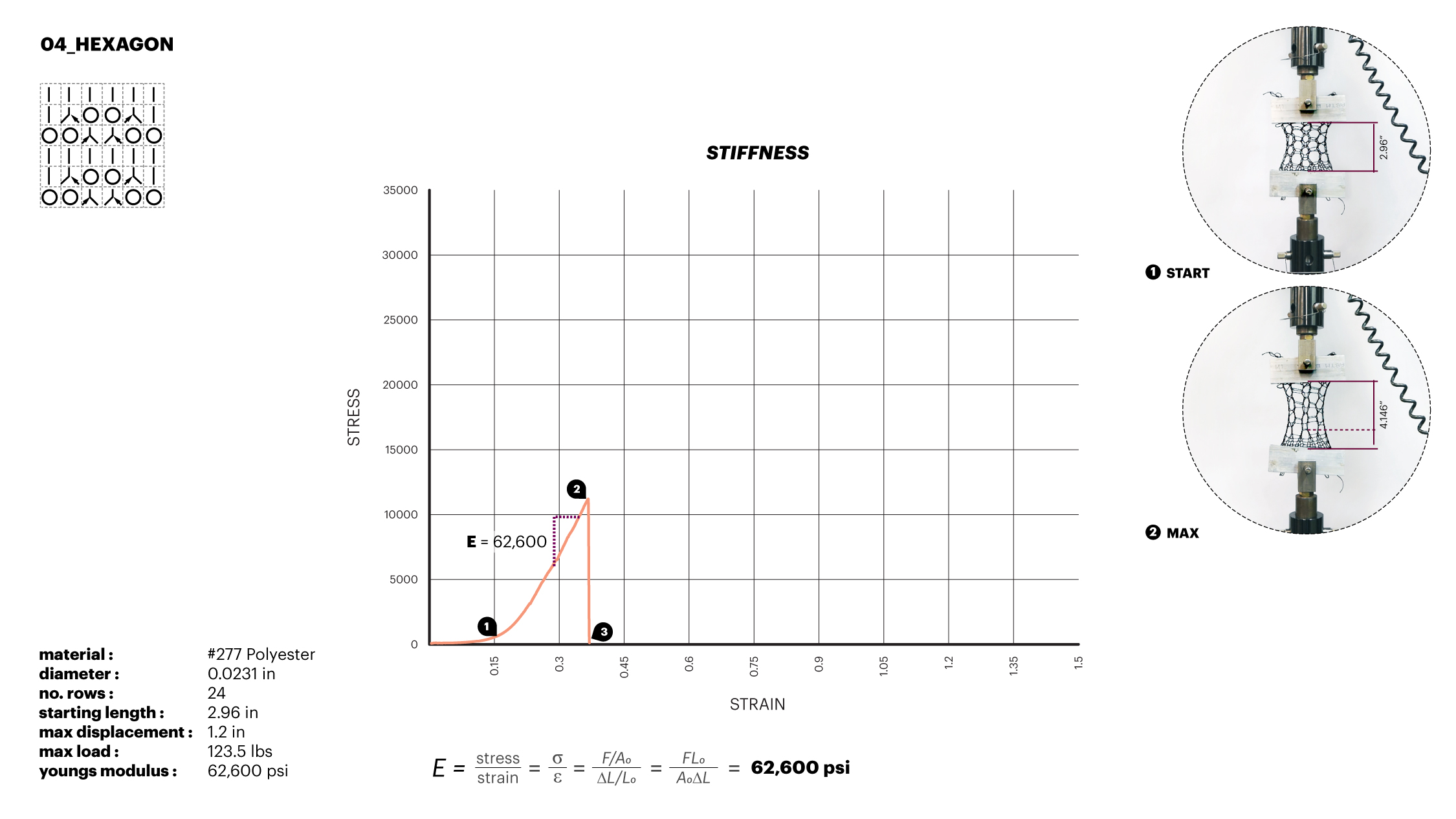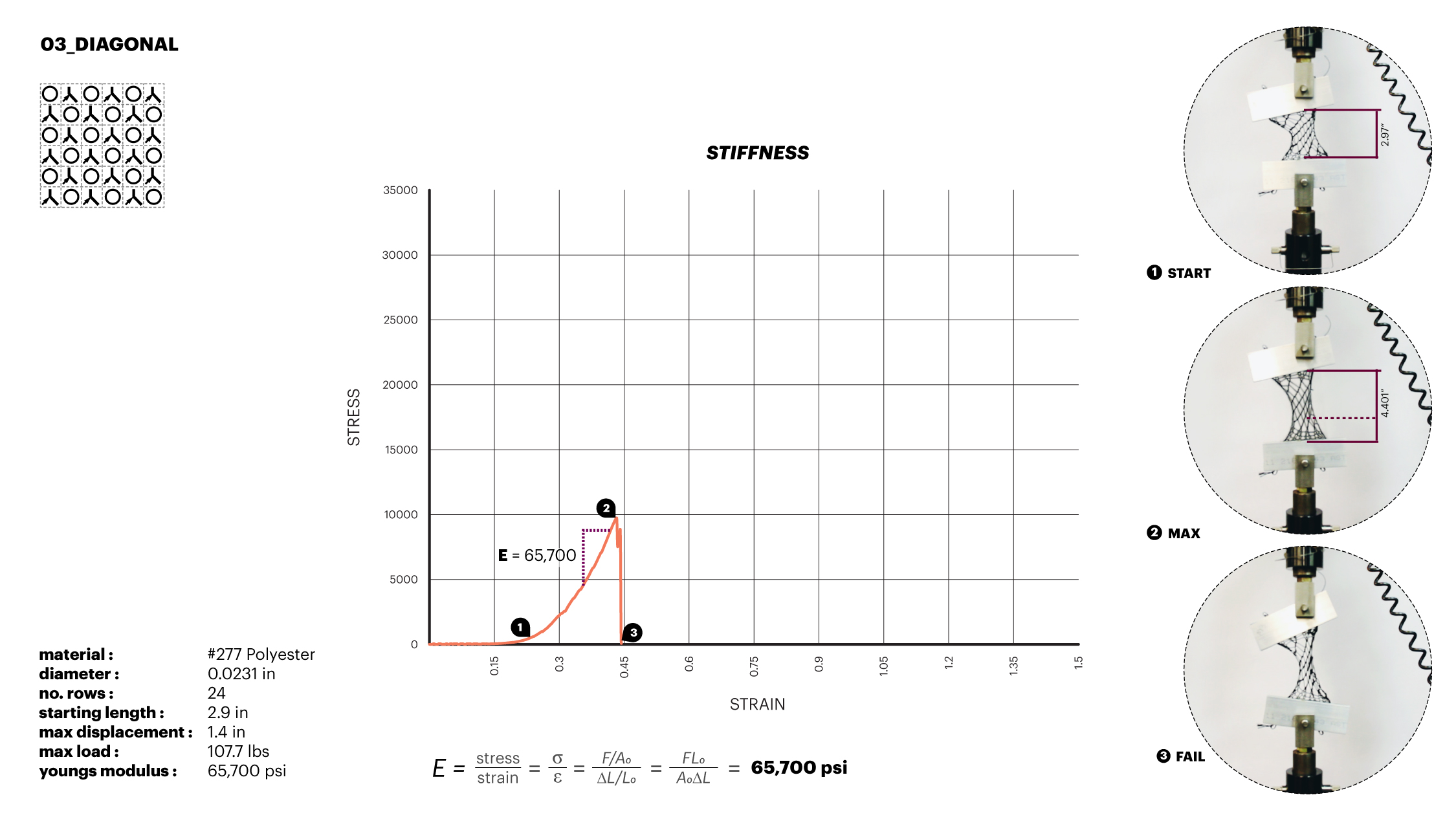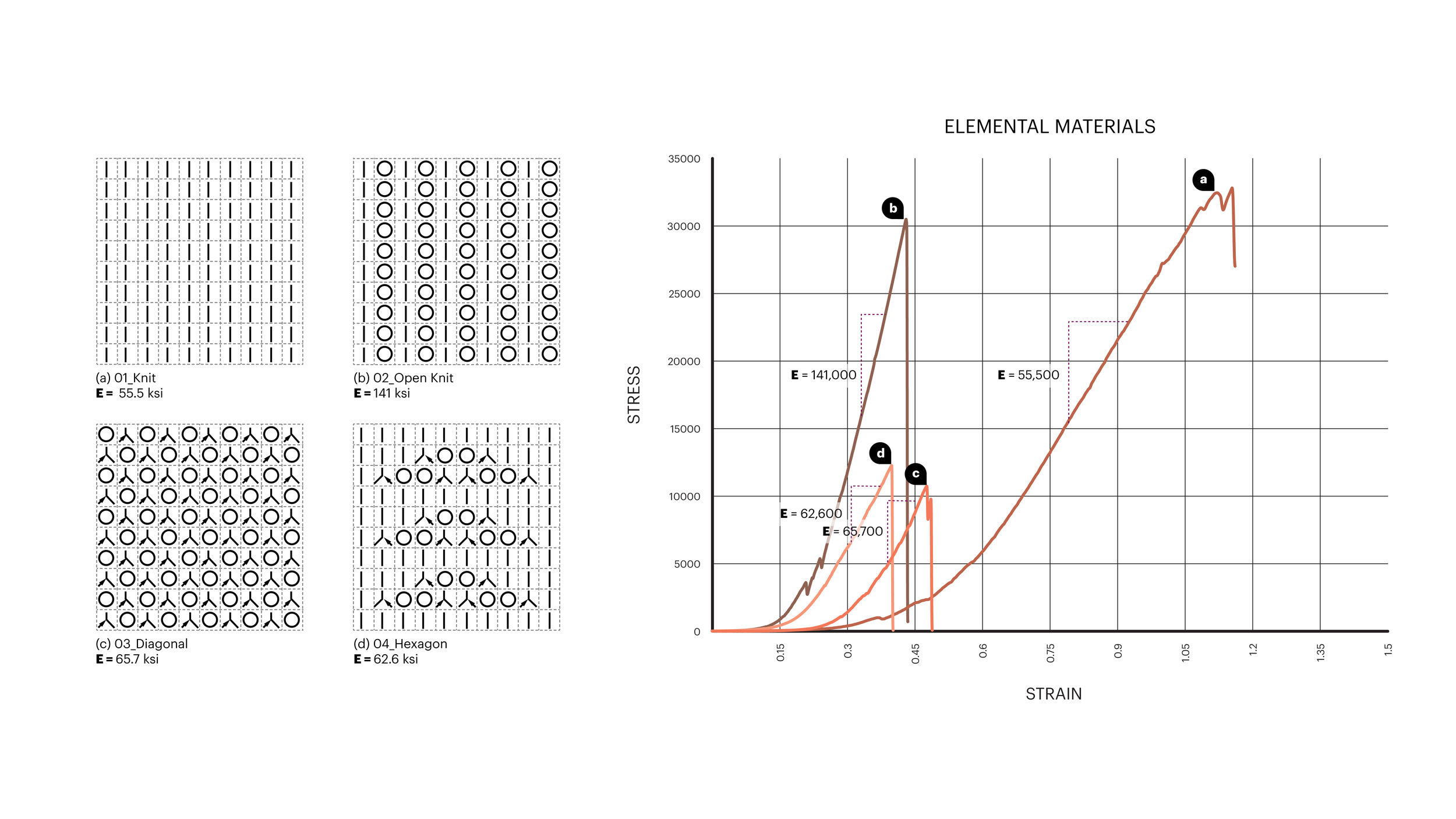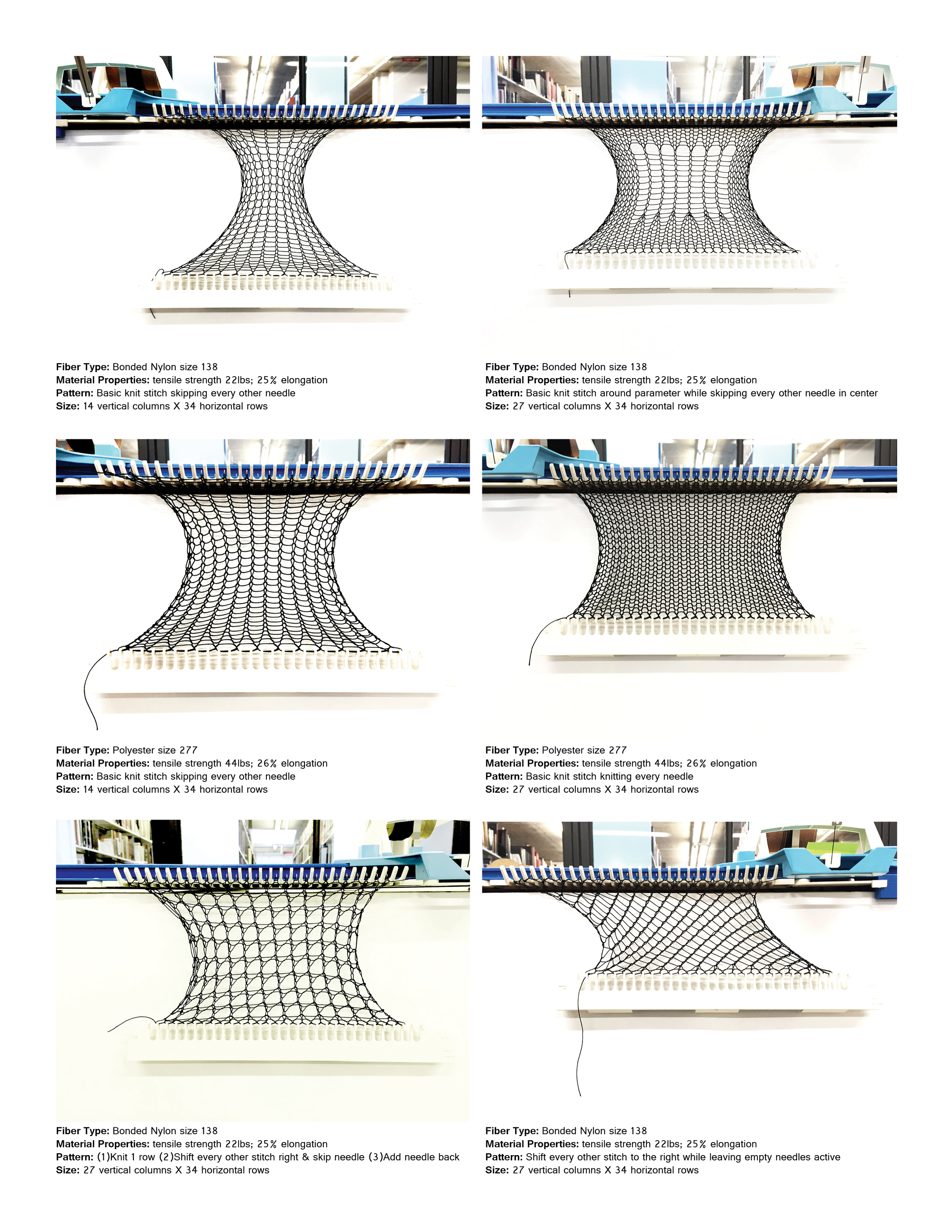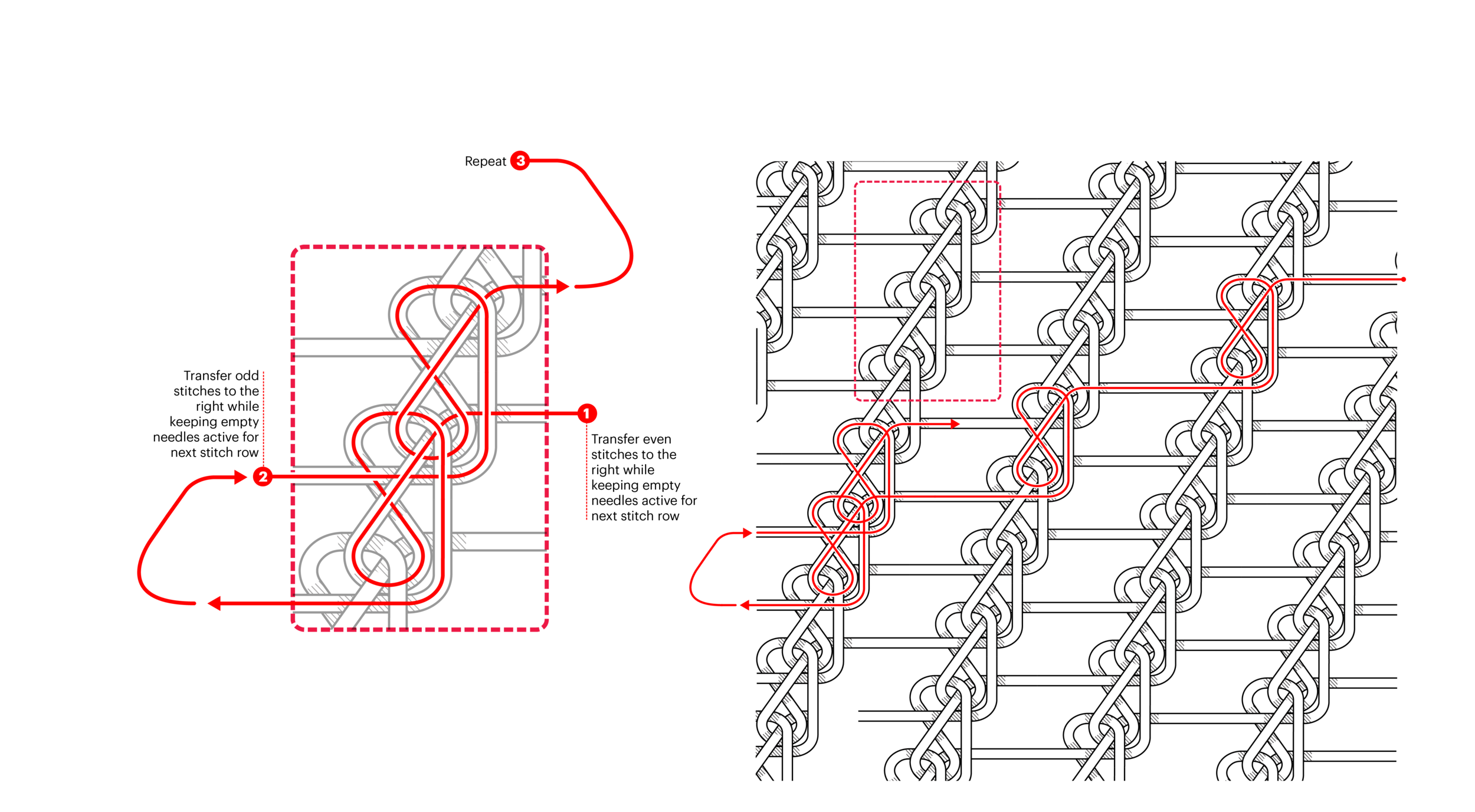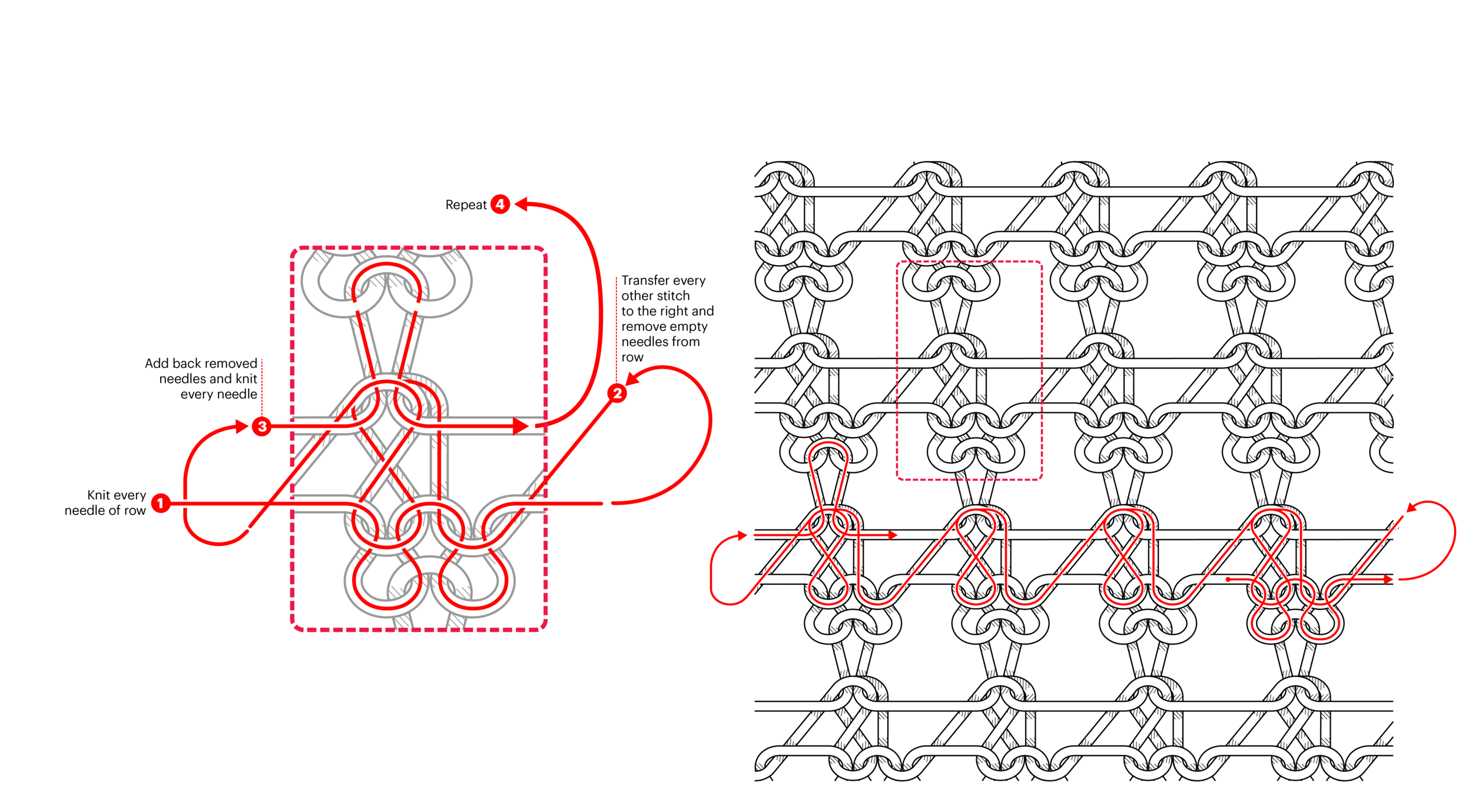The goal for this week was to produce material samples to display the functionality of the machine. Unfortunately the tension of the string feeding into the machine is still causing problems. The needles fail to push the old row off of the needles therefore jamming the fibers into the carriage. I predict this is due to over stressing the yarn to the point that the small stepper motor can no longer turn the carriage. In attempt to relieve tension from the string, I added new components to the casing to hold a spool of yarn and clamp the assembly to the table (photo 1). Allowing the yarn to spin freely has helped significantly. In addition, a new (stronger!) motor is was ordered with a stronger torque.
While having difficulty producing a material output, I made small advancements in sending specific code to the machine. I created a very basic parametric drawing to control where voids in the knit pattern should exist. The program assumes you will knit around half of the carriage to make a flat knitted panel. While the width of the textile is fixed to half the circumference of the carriage, the height is not. A base grid represents the rows and columns of the textile. Closed boundaries can be drawn into the grid to mark voids in the surface or regions that material is not wanted. The program outputs a text document with commands corresponding to the specified design. This document is imported into Arduino to control the machine.


